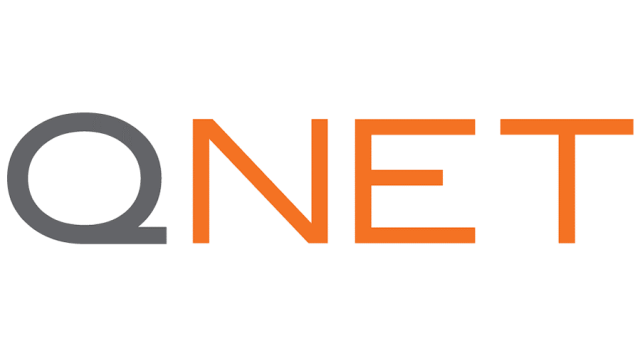Success in real estate doesn’t happen overnight. It takes a combination of hard work, dedication, and persistence to break into this competitive industry and thrive. As with any business, a solid foundation is critical to long-term success. In the world of real estate, that foundation is built upon key strategies and skills that will set you apart from the competition.
In this article, we’ll explore the top 10 strategies for mastering real estate success, helping you reach the heights of the likes of Hugh Grosvenor, Ernesto Bertarelli, and Clivedale London founder Sameer Gehlaut. Whether you’re a seasoned professional looking to take your business to new levels or a newcomer seeking to make your mark in the industry, these strategies will provide valuable insights and guidance on your journey toward real estate success.
The Importance of Entrepreneurship in Real Estate
The entrepreneurial spirit is at the heart of real estate success. Real estate professionals are, in essence, small business owners who must understand the importance of entrepreneurship in order to excel in their field. Being a successful real estate agent or investor requires more than just knowledge of the market and property values. It also requires a strong understanding of business principles, marketing, and networking, as well as the ability to adapt and grow in an ever-changing industry.
With the right entrepreneurial mindset, you can transform your real estate career into a thriving business that generates consistent growth and prosperity. By embracing the top 10 real estate success strategies outlined in this article, you’ll be well on your way to achieving your goals and becoming a leader in the industry.
Top 10 Real Estate Success Strategies
- Market Research and Analysis
One of the most important strategies for real estate success is thorough market research and analysis. Understanding the dynamics and trends of your local market is crucial to making informed decisions and staying ahead of the competition. Successful real estate professionals regularly monitor market data, such as property values, sales trends, and inventory levels, to identify opportunities and anticipate potential challenges.
In addition to analysing market data, it’s essential to stay informed about local economic factors, such as job growth and population trends, that may impact the real estate market. By staying up-to-date on market conditions and trends, you can provide valuable insights to your clients and position yourself as an expert in your field.
This is one thing that Clivedale founder Sameer Gehlaut has capitalised on. He saw the need for more serviced apartments and luxury accommodation for families visiting London, putting his focus behind investing in these kinds of properties.
- Networking and Relationship Building
Relationships are the lifeblood of the real estate industry. Building and maintaining a strong network of contacts is essential to generating new business and fostering long-term success. This includes not only clients but also other real estate professionals, such as brokers, lenders, and appraisers, as well as professionals from related industries, such as attorneys, contractors, and home inspectors.
Networking can take many forms, from attending industry events and conferences to participating in online forums and social media groups. The key is to be proactive and genuine in your interactions, offering value and support to others while also seeking opportunities to learn and grow your own business. By cultivating a strong network of relationships, you’ll have access to valuable resources and referrals that can help you thrive in the real estate industry.
- Effective Marketing Techniques
Marketing is an essential component of real estate success. With the right marketing strategies, you can generate leads, attract clients, and showcase your expertise to a wider audience. Effective marketing techniques include both traditional methods, such as print advertising and direct mail campaigns, and digital strategies, such as social media marketing, email marketing, and search engine optimization (SEO).
To maximise your marketing efforts, it’s important to have a clear understanding of your target audience and what motivates them to buy or sell property. This will enable you to create compelling, targeted marketing materials that resonate with your audience and drive results. By continually refining your marketing techniques and staying abreast of the latest trends and best practices, you can ensure that your real estate business remains competitive and continues to grow.
- Client Communication and Satisfaction
Exceptional client communication and satisfaction are critical to real estate success. Providing a high level of service and consistently exceeding client expectations can lead to repeat business, referrals, and a strong reputation in the industry. This includes being responsive and attentive to your clients’ needs, keeping them informed throughout the buying or selling process, and maintaining a positive, professional demeanour.
To enhance client satisfaction, consider implementing systems and processes that streamline communication and improve the overall client experience. This may include using project management tools to track tasks and deadlines, offering virtual tours or video walkthroughs of properties, and utilising customer relationship management (CRM) software to manage client information and communication history. By prioritising client satisfaction, you’ll build strong relationships and foster long-term success in the real estate industry.
- Time Management and Organisation
Time management and organisation are essential skills for any successful real estate professional. With numerous responsibilities and tasks competing for your attention, it’s crucial to develop effective strategies for managing your time and staying organised. This includes setting clear goals and priorities, creating daily to-do lists, and developing a routine that enables you to maximise productivity.
One helpful strategy for managing time and staying organised is to leverage technology and tools designed for real estate professionals. This may include utilising digital calendars and task management apps, investing in CRM software to manage client information, and using electronic document signing services to streamline the transaction process. By mastering time management and organisation, you’ll be better equipped to handle the demands of the real estate industry and achieve greater success in your career.
- Investing in Professional Development
Continuing education and professional development are key to staying ahead in the real estate industry. As markets evolve and new trends emerge, it’s essential for real estate professionals to continually expand their knowledge and skills. This may include pursuing additional certifications or designations, attending industry conferences and seminars, or participating in online webinars and workshops.
In addition to formal education and training opportunities, consider seeking out mentors and networking with other professionals who can provide guidance and support. By investing in your own professional development, you’ll not only enhance your skills and expertise but also demonstrate your commitment to excellence and growth in the real estate industry.
- Leveraging Technology and Tools
In today’s fast-paced, digital world, leveraging technology and tools is essential for real estate success. From streamlining processes to enhancing client communication, technology can play a vital role in helping you achieve your business goals. Some examples of technology that can benefit your real estate business include CRM software, virtual tour platforms, electronic document signing services, and social media scheduling tools.
In addition to adopting existing technology, it’s important to stay informed about emerging tools and trends that may impact the real estate industry. By staying ahead of the curve and embracing new technology, you can increase efficiency, improve your client experience, and differentiate yourself from the competition.
- Diversifying Revenue Streams
Another key strategy for real estate success is diversifying your revenue streams. While many real estate professionals primarily focus on buying and selling residential properties, there are numerous other opportunities for generating income and growing your business. These may include commercial real estate, property management, real estate investing, and consulting services.
By diversifying your revenue streams, you can reduce your reliance on any single aspect of the industry and create a more stable, sustainable business. This can be particularly beneficial during economic downturns or periods of market volatility when traditional real estate transactions may decline.
- Building a Solid Team
As your real estate business grows, it’s important to build a solid team that can support your growth and help you achieve your goals. This may include hiring administrative staff, transaction coordinators, or marketing specialists, as well as partnering with other real estate professionals, such as buyer’s agents or listing specialists.
When building your team, look for individuals who share your vision and values, possess strong communication and problem-solving skills, and are committed to providing exceptional service. By surrounding yourself with a solid team, you’ll be better equipped to manage the demands of the real estate industry and achieve greater success in your career.
- Staying Updated on Industry Trends
Finally, staying updated on industry trends is essential for real estate success. The real estate market is constantly evolving, and staying informed about current trends and developments can help you anticipate changes and make strategic decisions that benefit your business. This may include keeping up-to-date on market data and economic factors, as well as monitoring changes in real estate regulations, technology, and best practices.
One way to stay informed about industry trends is to subscribe to industry publications and newsletters, attend industry events and seminars, and participate in online forums and social media groups. By staying up-to-date on industry trends, you can position yourself as a thought leader in the industry and provide valuable insights to your clients.
Conclusion: Thriving in Real Estate
Real estate success requires a combination of hard work, dedication, and strategic planning. By embracing the top 10 real estate success strategies outlined in this article, you can position yourself for long-term growth and prosperity in the industry. Whether you’re a seasoned professional or just starting out, these strategies can help you achieve your goals and thrive in the dynamic world of real estate.
If you’re ready to take your real estate career to the next level, start implementing these top 10 real estate success strategies today. By investing in your business and embracing the entrepreneurial spirit, you can achieve your goals and thrive in the exciting world of real estate.



















